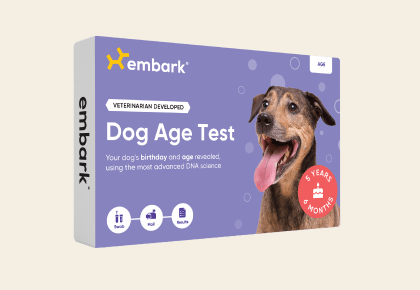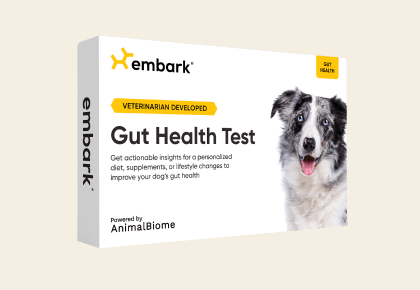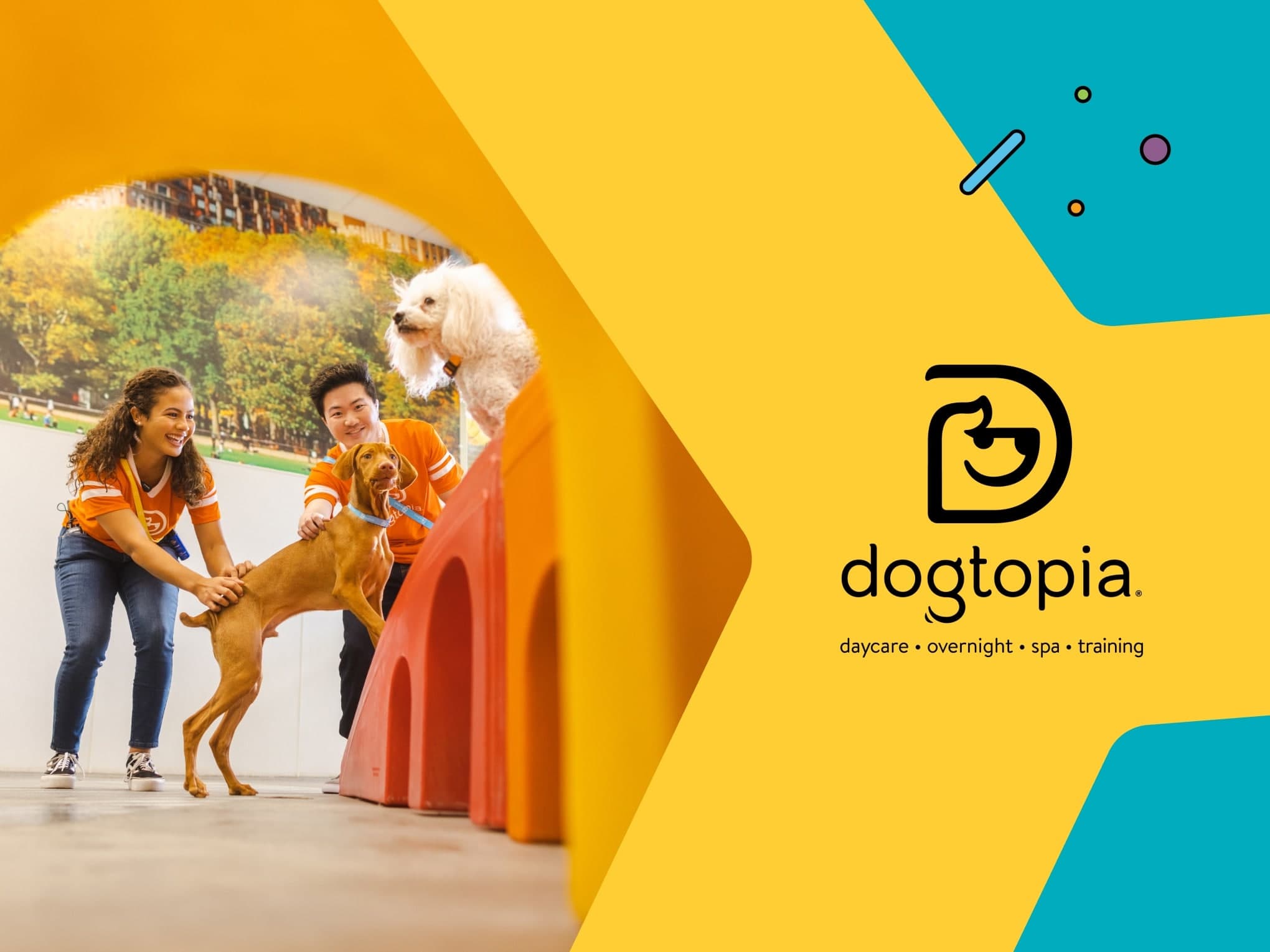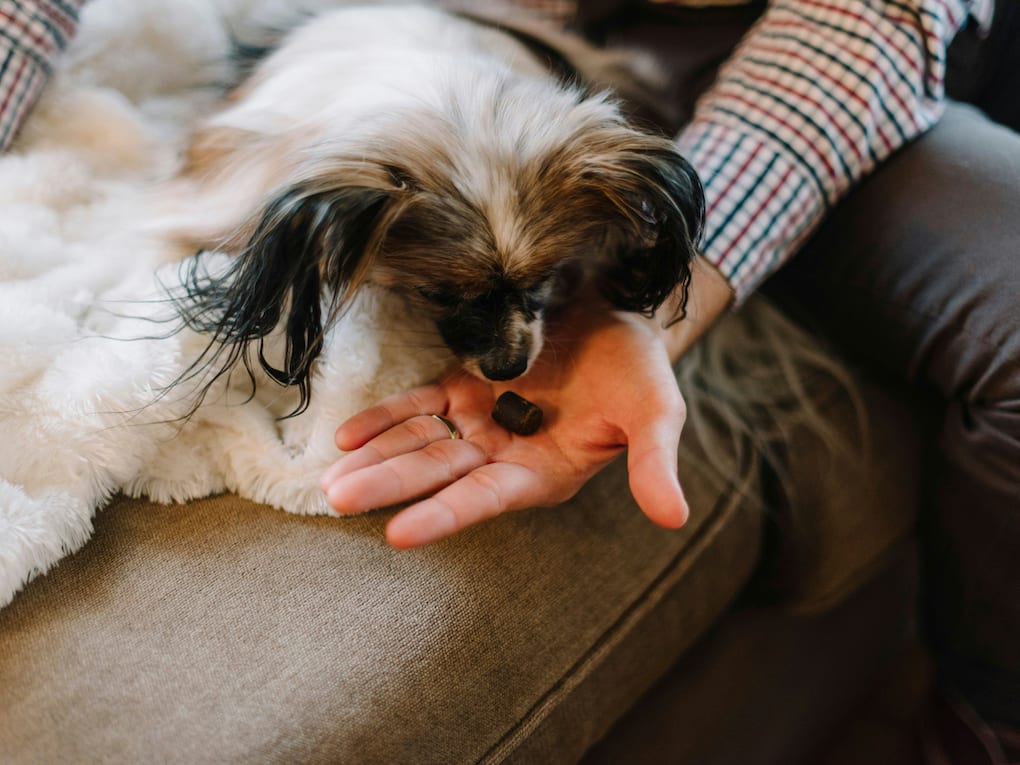Have you ever wondered if your dog really knows how much you love them? You may be familiar with the idea of the five love languages: affirmation, acts of service, gifts, quality time, and physical touch. In practice, the idea behind love languages is that because each of us experiences love differently, understanding your partner’s love language and intentionally incorporating it into your interactions can help strengthen your relationship. This got us thinking about love languages for dogs.
Before you got a dog, you probably had a vision of what life with your dog would be like. Maybe you pictured hiking together, cuddling together on the couch and watching movies, or competing in agility. Each of us wants different things from our relationship with our dogs, and similarly, each dog is looking for something unique as well—their “love language,” if you will.
All dogs need enrichment, affection, and quality time with their people, regardless of their breed or breed mix. Each dog is an individual, but we can think of certain breed traits and group traits as “dog love languages.” We hope this helps you better understand your dog and what they may want to do with you!

The following contains general information about which breed groups are likely to enjoy certain activities, but individual dogs may enjoy some activities more than others. Your dog may demonstrate multiple “love languages,” or even all five—which just means more love to go around. Be sure to listen to your dog to learn their preferences, so you can do more of their favorite activities.
Hound group
Hounds are an active group of dogs that were originally bred to help hunters find prey with their highly sensitive noses or chase down game. These dogs’ primary love languages are likely to be “Give Me a Job” and “Let’s Play!”
At Home: A fun way to help your hound feel fulfilled is to create games and challenges that utilize their natural instincts. This can look like a game of chase, hiding treats in boxes, or pulling out some treat-dispensing toys to help your dog use their skills.
Out & About: If you’re ready to improve your dog’s hunting skills, consider getting involved with sports like scent work, fast CAT (open to all purebred and mixed-breed dogs), or lure coursing (for sighthounds only).
Terrier group
Don’t let these dogs’ (often) smaller size fool you. Dogs in the terrier group are often active and feisty little dogs. This breed group was developed to hunt rats and mice to protect their family’s farms and properties. Terrier breeds include Border Terriers, Cairn Terriers, Jack Russell Terriers, and Miniature Schnauzers. These spunky little dogs tend to be active, tough, and extremely loyal to their guardians and families.
The lively terrier group is always ready for adventure, fun, and games. The primary love languages of dogs in the Terrier group are likely to be “Let’s Play” and “Give Me The Good Stuff.”
At Home: Generally not content to be lap dogs, terriers look for enrichment and activity in their days. You can create fun games and challenges for them to use their natural abilities by hiding toys or treats in boxes, under blankets, or in other rooms of your home and encouraging them to find them. Terriers also tend to love digging, so creating a sand pit with hidden toys and treats can be an excellent outlet for this behavior (and won’t ruin your garden!)
Out & About: Terriers typically excel at any sport or activity where they can use their noses. The terrier-specific sport of Earthdog, where dogs go into man-made tunnels to search for rats (no rats are injured), is a lot of fun. Similarly, the sport of Barn Hunt, which is open to all breeds, is an excellent way to channel your terrier’s innate desire to find rodents.
Working group
As the name implies, most working dogs love having a job. These breeds include Bernese Mountain Dogs, Boxers, Bullmastiffs, and Newfoundlands. These dogs were bred to do various jobs, from guarding homes and pulling carts to rescuing people from drowning. Working dogs typically love to be needed and take pride in a job well done.
They tend to be large, powerful dogs passionate about training and learning and are very devoted to their people and their work. Their primary love languages are likely to be “Tell Me I’m a Good Dog” and “Give Me A Job.”
At Home: These big dogs are often looking for something to do, and like to be of use around the house. To help your working dog feel fulfilled, teach them skills to help you around the house like putting their toys away, or helping you to carry things from room to room in the house.
Out & About: These large dogs love to work and you can get involved with various sports and activities that use their natural abilities. Depending on your dog’s breed and what they were originally developed to do, you might want to explore water work, carting, or drafting.
Herding group
Herding dogs are some of the top athletes of the dog world. These exuberant, active dogs often excel at work and sports and are the kind of dogs who are generally happiest when they are getting to use their minds. No surprise, their primary love languages are likely to be “Give Me A Job” and “Let’s Play.”
Popular herding breeds include Australian Cattle Dogs, Border Collies, German Shepherd Dogs, and Shetland Sheepdogs. These smart and active dogs are typically extremely biddable and generally excel in various activities and sports. Herding breeds love to learn and be active. They enjoy solving puzzles and having a job to do.
At Home: Be sure to keep your herding dog active around the house. Playing with toys and learning tricks is a great way to show herding dogs how much you care. You can even give them chores around the house like teaching them how to put toys away in the toy basket.
Out & About: Herding dogs can excel at various canine sports. To help your herding dog feel loved and fulfilled, consider taking classes or getting involved with sports like Agility and Flyball. You can even explore if your dog has the drive to herd through Treibball, where dogs herd balls, or actual Herding, a sport that tests a dog’s instinct around and ability to move livestock.
Toy group
Breeds in the toy group include the Cavalier King Charles Spaniel, Chihuahua, Italian Greyhound, Maltese, and Shih Tzu. The dogs in this group are small in stature, but don’t underestimate them—they often have a big personality. Most toy breeds were developed to be companion dogs, so these spunky little companions are typically very devoted and often see their person as the center of their universe. Their primary love languages are likely to be “Let’s Snuggle” and “Give Me The Good Stuff.”
At Home: These little pups are easy to spoil! Find time each day to spend quality time together. Even though these pups might love to cuddle, don’t forget to get them up and spend some active time together by playing games at home or in the yard.
Out & About: Even though these small dogs might be right at home on your lap, they may also love an outing, like a short trip to the park, a dog-friendly restaurant, or a mini vacation. These little dogs can also be great athletes and enjoy sports and activities like larger dogs. Sports like Canine Freestyle, agility, and scent work are all fun to explore with toy breeds.
Non-sporting group
The non-sporting group is the most diverse group. Non-sporting breeds include the Boston Terrier, Bichon Frise, Chow Chow, and Shar-Pei. This group is diverse in terms of coat, size and appearance, and original function. From the Lhasa Apso to the French Bulldog, dogs in the non-sporting group have a very diverse range of love languages but are generally happy to be spoiled and played with! These dogs tend to have love languages of “Let’s Play” and “Give Me The Good Stuff.”
At Home: These spunky dogs enjoy a good time and can make wonderful companions. You can keep these dogs active at home with training, games, and puzzles. You can use treat-dispensing puzzles for your dog to play with or create your own by hiding treats in boxes or in a snuffle mat for your dog to find.
Out & About: Experiment with different sports and activities to see what your non-sporting breed excels at and finds most enjoyable. From agility to scent work, there are sports and classes that will fit the energy level of any dog.
Sporting group
Sporting dogs are athletic and active dogs always looking for a good time. They usually love to know when they’ve made you happy and often like to spend quality time with you. No surprise here, the primary love languages for breeds in the Sporting Group are likely to be “Tell Me I’m a Good Dog” and “Let’s Play.”
Sporting breeds were first bred to work alongside hunters to retrieve or locate prey. They include setters, retrievers, spaniels, and pointers. They tend to feel at home in the water and field and typically enjoy being active alongside the people they love. Most sporting dogs are happiest when they get to be out and doing things with you, and know that you are having a great time alongside them.
At Home: Sporting group dogs tend to love spending quality active time with you playing ball, hiking, and going on walks. They may want to play and explore with you, so be sure to add lots of games and activity into your daily routines.
Out & About: To channel your sporting dog’s inner drive, spend time enjoying the great outdoors in activities like hiking. You could also consider several sports and activities, including Rally Obedience, field trials, or dock diving.
Love languages in action
Here are some tips to keep in mind as you strengthen your bond with your dog through love languages:
- Give your dog more of what they want
When you are looking to spend more quality time with your dog, or just wanting to be more intentional in your daily life, it’s important to know what you want, and what your dog wants. A lot of conflict or challenges in people’s relationships and daily lives with their dogs come down to a mismatch of expectations in how you and your dog will spend quality time together. For example, if you have an active dog whose favorite thing to do is to run, and your favorite thing is to cuddle, you might feel like you are spending lots of time with your dog, but your relationship is lacking something. Similarly, if you try to coerce your dog into cuddling, your dog might feel frustrated and just want to play. This doesn’t mean you don’t love each other; it just means you and your dog have different human/canine love languages. - Find joy in compromise
Like any relationship, the one you have with your dog can require some compromise. If you and your dog have different love languages, try to meet your dog where they are. If you know your dog is always ready for adventure, make sure to carve out some time in your regular schedule to play, walk, hike, or learn new skills together. If you enjoy downtime but your dog doesn’t love to cuddle, you can use treats and positive reinforcement to help them be more comfortable relaxing near you on the couch. Just remember to respect your dog’s boundaries and remember that sometimes they need a break, too. - Enrichment regardless of breed
Meeting your dog’s social and emotional needs is one of the best ways to show our dogs we love them. All dogs need enrichment. Check out our suggested ways to provide mental stimulation for your dog to exercise their body and mind.
Not sure what your dog’s breed mix is? Now is the perfect time to find out with an Embark Dog DNA Test.
What are your dog’s main love languages? Which activities do they love doing the most?















